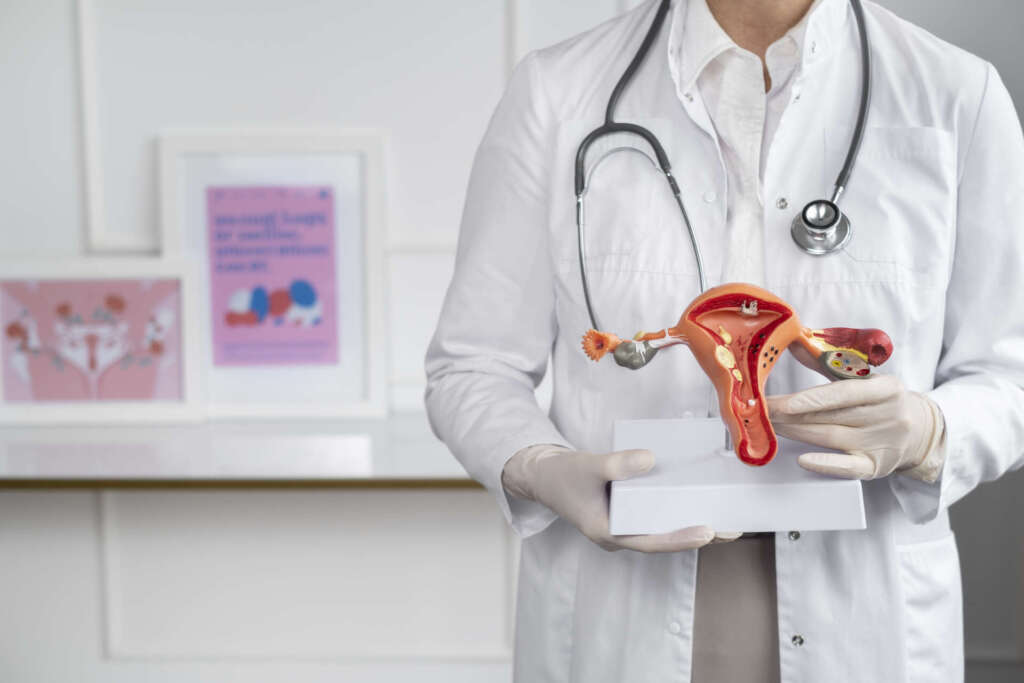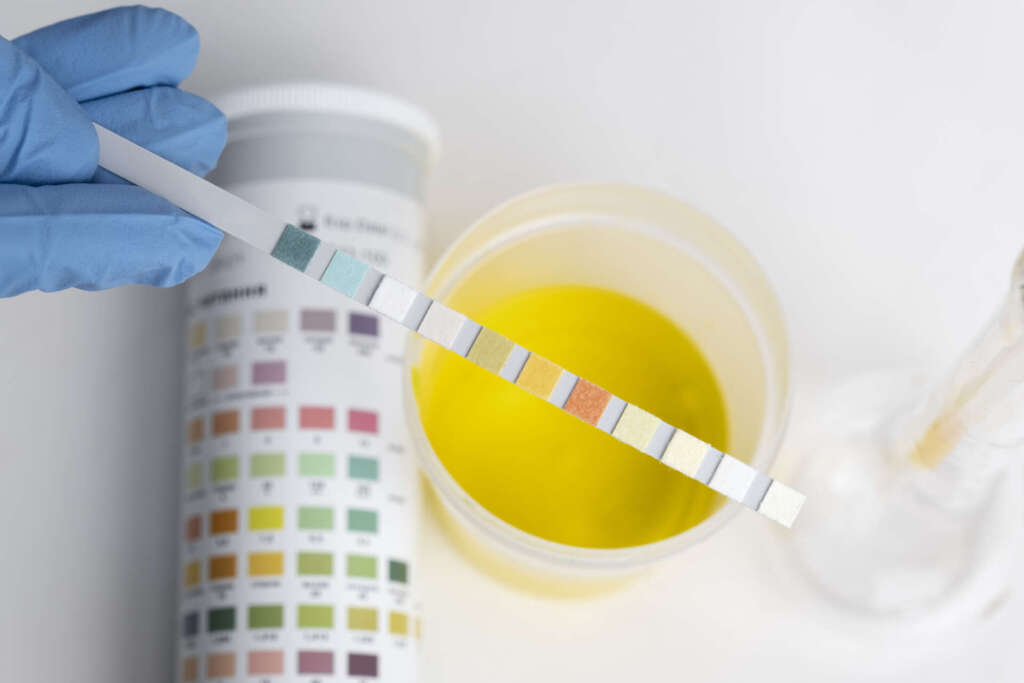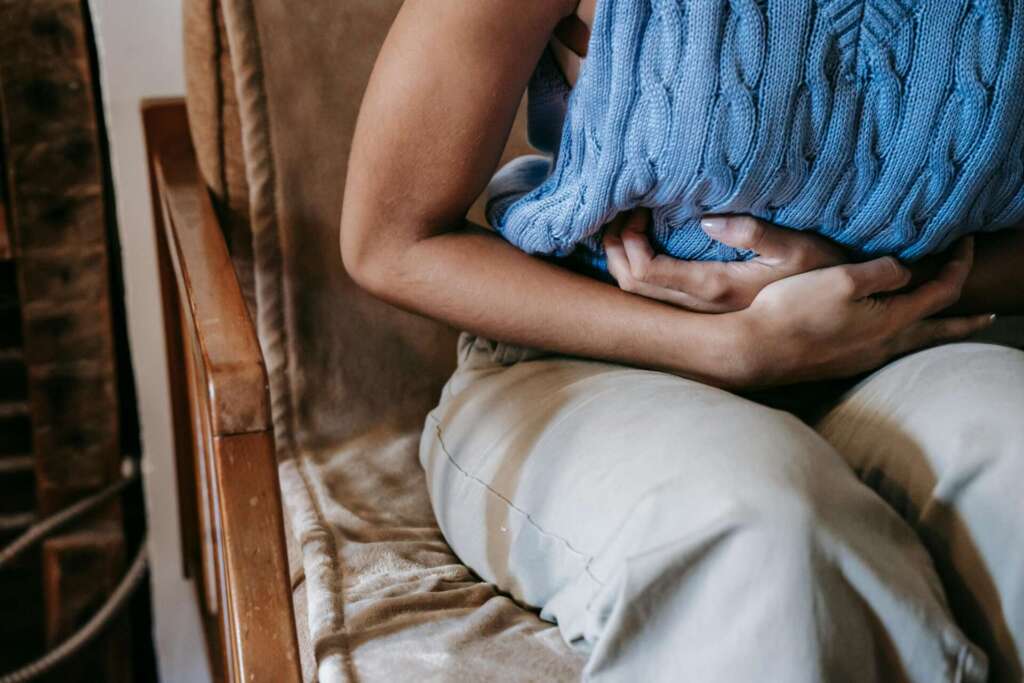Urinary Tract Infections (UTIs) are super common in women. E. coli bacteria is the main culprit and is responsible for up to 90% of these infections. UTIs happen when bacteria get into your urinary tract and if left untreated can cause discomfort and complications.
Urinary Tract Anatomy
Your urinary tract system has several parts, each of which can be affected by a UTI. These are:
- Urethra: The tube that carries urine out of your body.
- Bladder: The reservoir for urine before it’s expelled.
- Ureters: Two small tubes that carry urine from your kidneys to your bladder.
- Kidneys: Located at the back of your body, just above your hips, these small organs filter waste and produce urine.
Types of UTIs

The most common urinary tract infections are in the lower urinary tract:
- Cystitis: Bladder infection, usually caused by E. coli. Symptoms are frequent urination, urgency and pain during urination.
- Urethritis: Inflammation or infection of the urethra. While bacteria from the gastrointestinal tract are the common cause, sexually transmitted infections (STIs) can also cause urethritis.
UTIs in the upper urinary tract are less common but more serious:
- Pyelonephritis: Kidney infection when bacteria travel from the bladder to the kidneys. This needs immediate medical attention especially if accompanied by fever, chills and back pain as it can lead to sepsis if untreated.
Good news, only 1 in 100 UTI cases in non-pregnant women develop into pyelonephritis.
Complicated vs Uncomplicated Urinary Tract Infections
An uncomplicated UTI can occur in healthy women without any underlying health conditions or structural abnormalities of the urinary tract. They are typically caused by E. coli, symptoms occur (like painful urination and urgency), and they respond well to short courses of antibiotics.
Complicated UTIs, on the other hand, affect women with risk factors such as diabetes, pregnancy, urinary obstructions, or catheter use. These infections may involve more resistant bacteria, present with systemic symptoms like fever or flank pain, and require longer or broader-spectrum antibiotics. They are more prone to recurrence and complications if not properly treated.
Symptoms of a UTI in Women
UTIs can cause inflammation in the urinary tract and may manifest as:
- Flank, abdominal, lower back or pelvic pain
- Feeling of pressure in the lower pelvis
- Cloudy urine or foul-smelling urine
- Urinary incontinence (loss of bladder control)
- Frequent and urgent urination
- Painful urination (dysuria)
- Blood in the urine (hematuria)
- Other symptoms include fatigue, fever, chills, nausea, vomiting and in some cases, confusion or mental changes especially in the elderly.
Why Do Women Get Frequent UTIs?
Several factors can increase the risk of frequent UTIs:
- Toilet Hygiene: Wiping from front to back helps prevent bacteria from the anus to enter the urethra.
- Frequent Sexual Activity: Sex can introduce bacteria into the urethra, increasing the risk of infection. Urinating after sex can help flush out bacteria.
- Birth Control Methods: Diaphragms and spermicides can disrupt the natural balance of bacteria in the vagina, increasing the risk of UTIs. Consult your doctor if you have frequent UTIs and use these methods.
- Pregnancy: Hormonal changes during pregnancy can slow down urine flow and make you more susceptible to infection.
- Menopause: Reduced estrogen after menopause can thin out the vaginal walls and change the vaginal flora making post-menopausal women more prone to UTIs.
- Diabetes: Poorly controlled diabetes can weaken the immune system and damage the nerves that affect bladder function, increasing the risk of UTIs.
- Kidney Stones or Blockages: Any obstruction in the urinary tract can prevent proper urine flow and create a breeding ground for bacteria.
Diagnosing UTIs

If you have UTI symptoms, see your healthcare provider. Here’s what to expect:
- Discussion of your symptoms to determine if you have a UTI.
- Dipstick urine tests to check for infection markers such as white blood cells, nitrites or bacteria.
- Urine culture may be done if the diagnosis is not clear, if symptoms persist or if you have recurrent UTIs. This will help identify the bacteria causing the infection and guide treatment.
In severe or complicated cases, imaging studies such as ultrasound or CT scan may be needed to check for kidney stones, structural abnormalities or other underlying conditions.
How To Prevent Urinary Tract Infections
Here are some ways to reduce the risk of UTIs:
Ann’s Top Tips
- Stay Hydrated: Drink plenty of water to flush out bacteria.
- Wipe Correctly: Always wipe from front to back to prevent bacteria from entering the urethra.
- Practice Good Sexual Hygiene: Clean the genital area before and after sex and urinate after sex to prevent bacteria from settling in the urinary tract.
- Avoid Irritants: Avoid douches, deodorant sprays and scented products in the genital area as these can cause irritation.
- Review Your Birth Control: If you use diaphragm, spermicide or spermicide-lubricated condoms, consider switching methods if you have frequent UTIs.
Some say wear cotton underwear, avoid tight clothes and take showers instead of baths, but scientific evidence is limited. Still, good hygiene and hydration is key.
How Long Does a UTI Last?
Most UTIs resolve in 2-3 days. If symptoms persist beyond 48 hours, see your doctor for treatment. Antibiotics are usually prescribed and can clear up the infection in 5-7 days.
UTI vs Cystitis: What’s the difference?

Cystitis is a type of UTI that affects the bladder. Symptoms:
- Overactive bladder and urgency even after you’ve gone.
- Cloudy or smelly urine.
- Burning sensation when you urinate.
- Blood in the urine.
- Lower abdominal pain.
Cystitis doesn’t usually cause fever unlike more severe UTIs.
UTI vs Digestive and Kidney Diseases
UTIs affect the urinary system (bladder, urethra, sometimes kidneys) and cause symptoms like painful urination, urgency and in severe cases kidney involvement (pyelonephritis). UTIs are usually caused by bacteria like E. coli entering the urinary tract and are treatable with antibiotics.
Digestive diseases affect the gastrointestinal tract (stomach, intestines, liver etc) and cause symptoms like abdominal pain, diarrhea, constipation and nausea. Conditions like IBS, Crohns and ulcerative colitis are examples. These conditions have different causes (autoimmune, infections, diet etc) and often require long term management.
Kidney diseases like CKD involve damage to the kidneys that prevents them from filtering waste from the blood. These conditions can be caused by high blood pressure, diabetes or genetic factors and if left untreated can progress to kidney failure. While UTIs can affect the kidneys, kidney diseases are often systemic and require more invasive treatments like dialysis or transplant.
Natural Remedies for UTI
For mild UTIs, self-care can help:
- Stay Hydrated: Drink plenty of water to keep your urine pale and flush out bacteria.
- Rest and Pain Relief: Over-the-counter pain relievers like paracetamol can help with discomfort and fever.
- Heat Therapy: A hot water bottle applied to your abdomen, back or thighs can help with pain.
Don’t take NSAIDs like ibuprofen as they can harm the kidneys during an infection.
Can Drinking Cranberry Juice Prevent UTIs?

Cranberry juice is often recommended as a natural remedy but scientific evidence is mixed. Cranberries contain proanthocyanidins which may prevent bacteria from adhering to the urinary tract lining. But for those who have frequent UTIs, staying hydrated and good hygiene is more effective.
When To See a Doctor
See a doctor if:
- First time UTI symptoms.
- Pregnant and have UTI symptoms.
- Male with UTI symptoms (as these are rare in men and could be other conditions).
- Caring for an elderly with UTI symptoms especially if mental changes or confusion is present.
- Symptoms after surgery.
Recurrent UTI
Recurrent urinary tract infections (UTIs) in women are defined as experiencing two or more infections within six months or three or more within a year. They often result from reinfection by the same or different bacteria, most commonly E. coli. Risk factors include frequent sexual activity, use of spermicides, menopause, and a history of previous UTIs.
Management typically involves lifestyle modifications, preventive measures like post-coital antibiotics, and sometimes long-term low-dose oral antibiotic therapy to reduce recurrence. Addressing any underlying conditions, such as hormonal imbalances or structural abnormalities, is also important in preventing recurrent infections.
Patient Story
Anika, 34, came in because she was feeling miserable. For 2 days she had been running to the bathroom nonstop, needing to pee way more than usual. And when she did go to the bathroom, it burned. Her symptoms came on suddenly and were getting worse so she decided to come in.
She said she had to pee every 20-30 minutes and when she did go to the bathroom she felt like she wasn’t done. Even after she went she still felt like her bladder wasn’t empty. And her urine was cloudy and smelly, which was not normal for her.
She was feeling pressure and discomfort in her lower abdomen but no pain in her back or sides. She didn’t have a fever or nausea so she didn’t think it was a kidney infection.
Anika’s Medical History
Anika is healthy and has never had a urinary tract infection (UTI). She is sexually active and takes the pill but doesn’t use other forms of birth control like diaphragms or spermicides which can increase the risk of UTIs.
She hadn’t been drinking as much water as usual lately due to a busy schedule but otherwise there hadn’t been any big changes in her routine or health.
Medical Examination
Anika looked well and was not in distress. I checked her vitals and everything was normal. When I pressed on her lower abdomen she felt mild tenderness which meant irritation around the bladder. But when I checked her lower back she didn’t experience any pain, which meant the infection hadn’t spread to the kidneys.
Diagnosis
With Anika’s symptoms, I suspected strongly she had a urinary tract infection (UTI), specifically a bladder infection (cystitis). Cystitis is the most common type of UTI and is caused by bacteria like E. coli.
To confirm the diagnosis, I did a urine dipstick test in the office. This test looks for signs of infection, like bacteria and white blood cells, in the urine. The results were positive, which meant Anika had a bacterial infection.
I also sent a urine sample to the lab for a urine culture. This test will identify the exact type of bacteria causing the infection and ensure the right antibiotic is prescribed but I was pretty sure it was E. coli (the most common cause of UTIs).
Treatment
Based on her symptoms and the dipstick test results, I diagnosed Anika with acute uncomplicated cystitis (a straightforward bladder infection). I prescribed a short course of antibiotics which is the standard treatment for this type of infection. I prescribed nitrofurantoin for 3 days.
To help with her symptoms, I told Anika to:
- Drink plenty of water to flush out the bacteria.
- Take over the counter painkillers like paracetamol to ease the burning and discomfort in her tummy.
- Use a hot water bottle on her lower abdomen if needed.

I told Anika to keep an eye on her symptoms and come back if she didn’t feel better in 48 hours or if new symptoms like fever or back pain developed as these could mean a more serious infection.
Outcome and Follow Up
Anika felt much better within 48 hours of starting the antibiotics. She finished the full course of antibiotics and by the end of the week her symptoms were gone. The urine culture confirmed it was E. coli and no further treatment was needed.
Conclusion
UTIs are common, especially among women, but with the right info you can manage and even prevent them. Knowing the anatomy of the urinary system and recognizing the symptoms early is key to treatment. Simple lifestyle changes like staying hydrated, good hygiene and taking precautions during sex can reduce the risk of recurring UTIs.
Most UTIs clear up with antibiotics but if symptoms persist or get worse seek medical attention. Regular communication with your doctor is important especially if you get recurrent urinary tract infections or have underlying conditions like diabetes or kidney issues.
For more info, watch my video guide here:
References
- Brennan, D. What Is the Difference Between Cystitis and UTI? Available here.
- Cleveland Clinic. Urinary Tract Infection. Available here.
- Leckie, K. What is the evidence for the role of oestrogen in the prevention of recurrent urinary tract infections in postmenopausal women? An evidence-based review. Journal of Clinical Gerontology and Geriatrics. Available here.
Disclaimer: The Content on this channel is for educational purposes and not intended to be a substitute for professional medical advice, diagnosis, or treatment. Always get advice from your doctor if you are worried or have symptoms.


